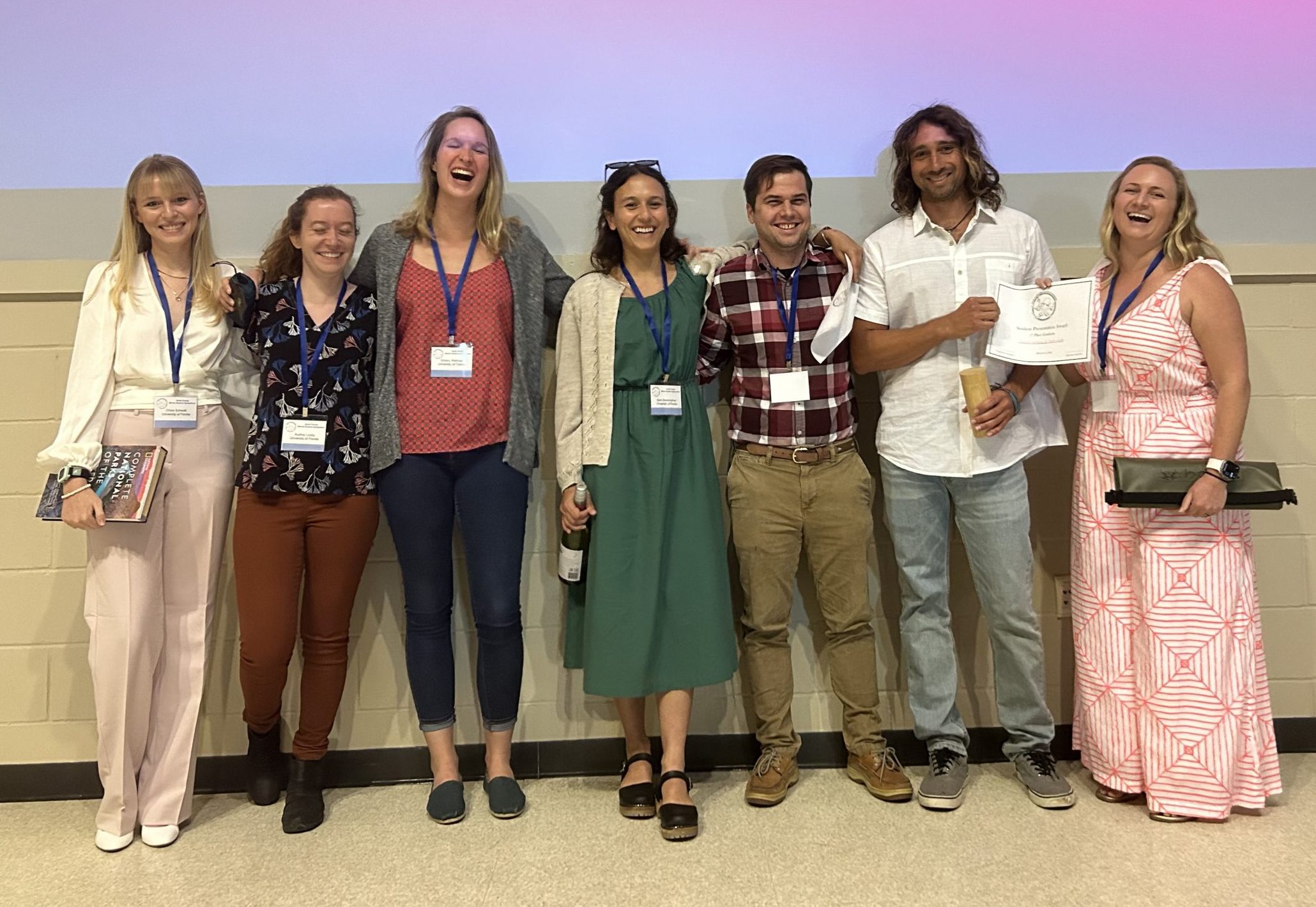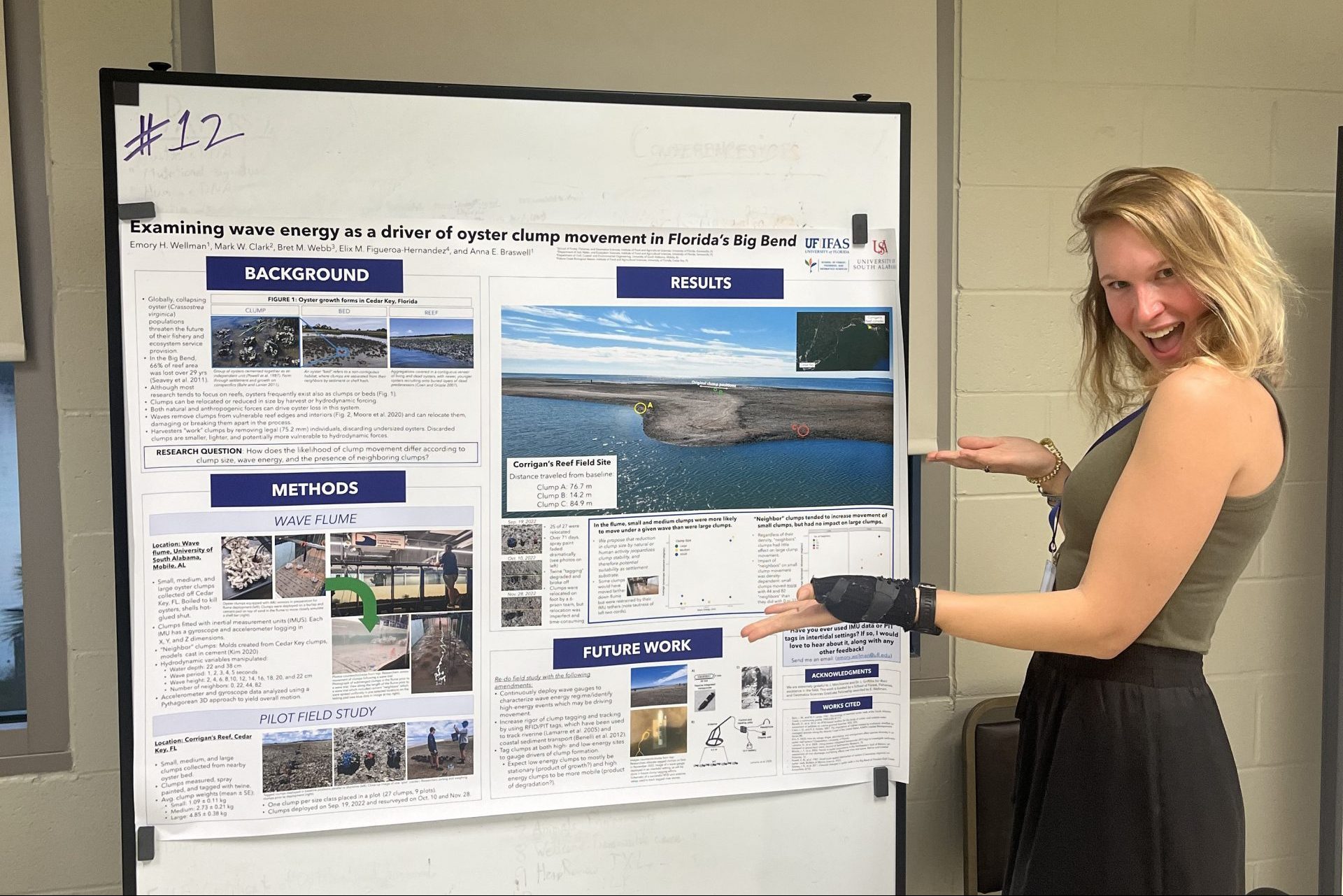
More than 100 students and researchers working in marine science across North Florida gathered for a rich learning, networking and professional development experience at the 10th annual North Florida Marine Science Symposium, held at the UF Whitney Marine Lab in St. Augustine from March 2 to 3.
“This is a great opportunity for students to share their research, often for the first time, and to network and explore career options in the field,” said UF Assistant Professor Andrew Altieri, Ph.D., who co-organized the event. “It’s also an important venue for folks around UF and some of our external collaborators to share the research that they’re doing, and it gives people a chance to meet each other.”

Students Share Research Results
Forty students from diverse fields—community ecology to coastal engineering —shared research results at the 2023 North Florida Marine Science Symposium. Below are highlights from two projects led by two doctorate students at the University of Florida.
What are the effects of wave energy on oyster clump movements in the Florida Bend?
Emory Wellman, a PhD student in the UF School of Forest, Fisheries and Geomatic Sciences examined wave energy as a driver of oyster clump movement in Florida’s Big Bend region to better understand the global trend of collapsing oyster populations. Oyster clumps can form when a reef degrades due to the weakening of oyster edges. Strong wave action can dislocate or reduce the size of oyster clumps, which, in turn, can lead to a decrease in oyster recruitment, the process of incorporating new oysters into a population to maintain population size.
What are the effects of development, water and precipitation on the presence of fecal pollution in the Guana-Tolomato-Matanzas estuary?
Increased urban development over the past few decades in the Guana-Tolomato-Matanzas Estuary has raised concerns about the impact of fecal pollution on ecosystems in the estuary from septic systems, which are used to treat wastewater. Daniele Pinton, a Ph.D. student in Civil and Coastal Engineering at the University of Florida, combined monitoring and modeling approaches that incorporated information on development, water and precipitation levels, to gauge the impact of septic systems on the presence of fecal pollution in the GTM estuary. This approach is unique in that it allows water managers to pinpoint the sources and levels of fecal pollution for a given area. In a whole neighborhood, for example, it can identify the single dwelling that contributes the most fecal pollution.
Pinton’s research will support water managers at the local and state level in developing cost-effective management strategies, and identifying those areas where septic tanks pose threats to human and environmental health from water pollution, and groundwater and soil contamination.
Hear what attendees had to say.